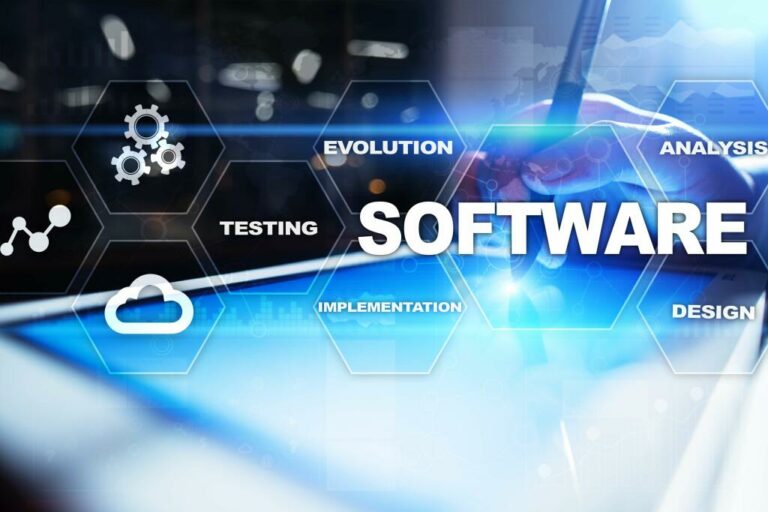This phase ends with a “go-live” decision and should include contingency plans to address challenges as the system is implemented. The biggest difference between the lean methodology and the other methodologies is that the system’s full set of requirements is unknown when the project is launched. As each iteration of the project is released, the statistics and feedback gathered are used to determine the requirements. The lean methodology works best in an entrepreneurial environment where a company is interested in determining if their idea for a software application is worth developing. Before looking to launch a new system, it is important to first understand what is needed to develop the system successfully.

It’s advantageous for large projects since development teams can create very customized products and incorporate any received feedback relatively early in the life cycle. New versions of a software project are produced at the end of each phase to catch potential errors and allow developers to constantly improve the end product by the time it is ready for market. They’ll typically turn the SRS document they created into a more logical structure that can later be implemented in a programming language. Operation, training, and maintenance plans will all be drawn up so that developers know what they need to do throughout every stage of the cycle moving forward.
Stage 4: Develop the code.
SDLC assists with process development, change management, user experience, and policies in addition to technical aspects of system development. An SDLC also provides for planning ahead of time, determining expenses and staffing decisions, defining goals, measuring performance, and validating points at each stage of the cycle to improve the final product’s quality. With its customizable spreadsheet interface and powerful collaboration features, Smartsheet allows for streamlined project and process management. Use Smartsheet’s SDLC with Gantt template to get started quickly, and help manage the planning, development, testing, and deployment stages of system development. Create a timeline with milestones and dependencies to track progress, and set up automated alerts to notify you as anything changes. Share your plan with your team and key stakeholders to provide visibility, and assign tasks to individuals to ensure nothing slips through the cracks.
Typically, the more steps defined in an SDLC model, the more granular the stages are. Software development managers will utilize SDLCs to outline various development stages, make sure everyone completes stages on time and in the correct order, and that the project is delivered as promptly and as bug-free as possible. Since SDLCs have well-structured documents for project goals and methodologies, team members can leave and be replaced by new members relatively painlessly.
Advantages and disadvantages of SDLC
It can be seen that testing is a main consideration in Benington’s model of information system development. Another variation of the SDLC model, where project verification and evaluation of each phase is also required, is the V-shaped model. Extensive testing may result in an increase of development costs and extension of the completion time of a project, but it is useful for risky and unfamiliar projects contributing significantly to system quality steps in system development life cycle and performance. In contrast, the waterfall model may be more appropriate for low-risk projects where requirements are well understood and potential bugs can be identified more easily. The systems development life cycle originally consisted of five stages instead of seven. As a leading provider of application security testing solutions, Veracode makes it easy for developers and security teams to integrate security throughout the SDLC.
DevOps Engineer and Application Life Cycle by Leonardo Loch … – Medium
DevOps Engineer and Application Life Cycle by Leonardo Loch ….
Posted: Tue, 10 Oct 2023 22:05:32 GMT [source]
Those involved in the SDLC include the c-suite executives, but it is the project/program managers, software and systems engineers, users, and the development team who handle the multi-layered process. Each project has its own level of complexity in planning and execution, and often within an organization, project managers employ numerous SDLC methods. Even when an enterprise utilizes the same methods, different project tools and techniques can differ dramatically. This phase often requires extensive programming skills and knowledge of databases. The team will build functionality for the product or service, which includes creating a user interface and building the database so users can store information in your system. Software development life cycle (SDLC) is the term used in the software industry to describe the process for creating a new software product.
Object-oriented analysis and design
It’s when you gather the team to brainstorm, set goals, and identify risks. At this stage, the team will work together to devise a set of business goals, requirements, specifications, and any high-level risks that might hinder the project’s success. Phase 7 of the systems development life cycle assesses and ensures that the system does not become obsolete.
Once the system is deployed within the agency, ongoing operations and maintenance will occur that are led by agency IT staff along program leads. Periodic review of system function should occur to ensure that the system performs as designed and system updates are identified. Improve chances of on-time, on-budget completion as users update in real-time, avoiding surprises during development. Lack of control over the system changes due to a working version’s fast turn-around to address users’ issues.
2: Systems Development Life Cycle (SDLC) Model
Iterative, rapid application development offers so much flexibility that you run the risk of never completing your project. In contrast, planned, linear style development can yield applications that do not meet the needs of end users even if they meet the stated requirements on paper. It’s critical that the program meets the quality requirements outlined in the SRS document.C++, PHP, and other programming languages are examples of common programming languages.
Developers use the methodology as they design and write modern software for computers, cloud deployment, mobile phones, video games, and more. Central to the creation of a new information system is the analysis of the public health agency’s business processes that the information system must support. Testing is critical to the system development life cycle to ensure compliance with functional, performance, and security requirements. Ideally, testing should happen at every stage of the SDLC to address issues early when they are fastest and most cost effective to fix. However, tests are often postponed until later stages, especially if they are not well integrated and create friction. The system development life cycle component of the course introduces aspects of methodology, the unique phases, and the roles that IT professionals play in the various stages of a project.
Integration and Testing
For example, in the cascade or V-model, the system analysis and requirements phase are fixed in the SRS document, the design of which should be completed before moving to the next stage. Each has advantages and disadvantages that must be considered in order to make an informed selection. A system development life cycle is a conceptual model that delineates the stages involved in developing and implementing a system. Each stage is important in the development process and differs from the others in terms of complexity, assets required, and intended functionalities.

Customers in remote rural areas are finding difficulty to access the bank services. It takes them days or even weeks to travel to a location to access the bank services. With the vision of meeting the customers’ needs, the bank has requested your services to examine the current system and to come up with solutions or recommendations of how the current system can be provided to meet its needs.
Agile System Development Life Cycle Methodology
Each of the testing steps in the development/configuration phase is tested against a step in the design phase. This ensures that the objective of the system is met and that it is fit for purpose. Most solution providers use the waterfall https://www.globalcloudteam.com/ life cycle approach for software solution development. The waterfall approach (refer Figure 14.3) helps to understand the extent of the residual risks and allows one to work conscientiously toward reducing those risks.
- At this phase, there is a risk of “scope creep” such that system enhancements that go beyond the charter and project management plan may be identified.
- These standards should be used within the context of the Forensic Laboratory’s Secure System Development Life Cycle.
- Students learn how to collect and document requirements, translate them to application design, and trace each project artifact to its original scope.
- Again, since SDLCs utilize extensive paperwork and guideline documents, it’s a team effort and losing one even major member will not jeopardize the project timeline.
- The major goal of an SDLC is to provide cost effective and appropriate enhancements or changes to the information system that meet overall corporate goals.